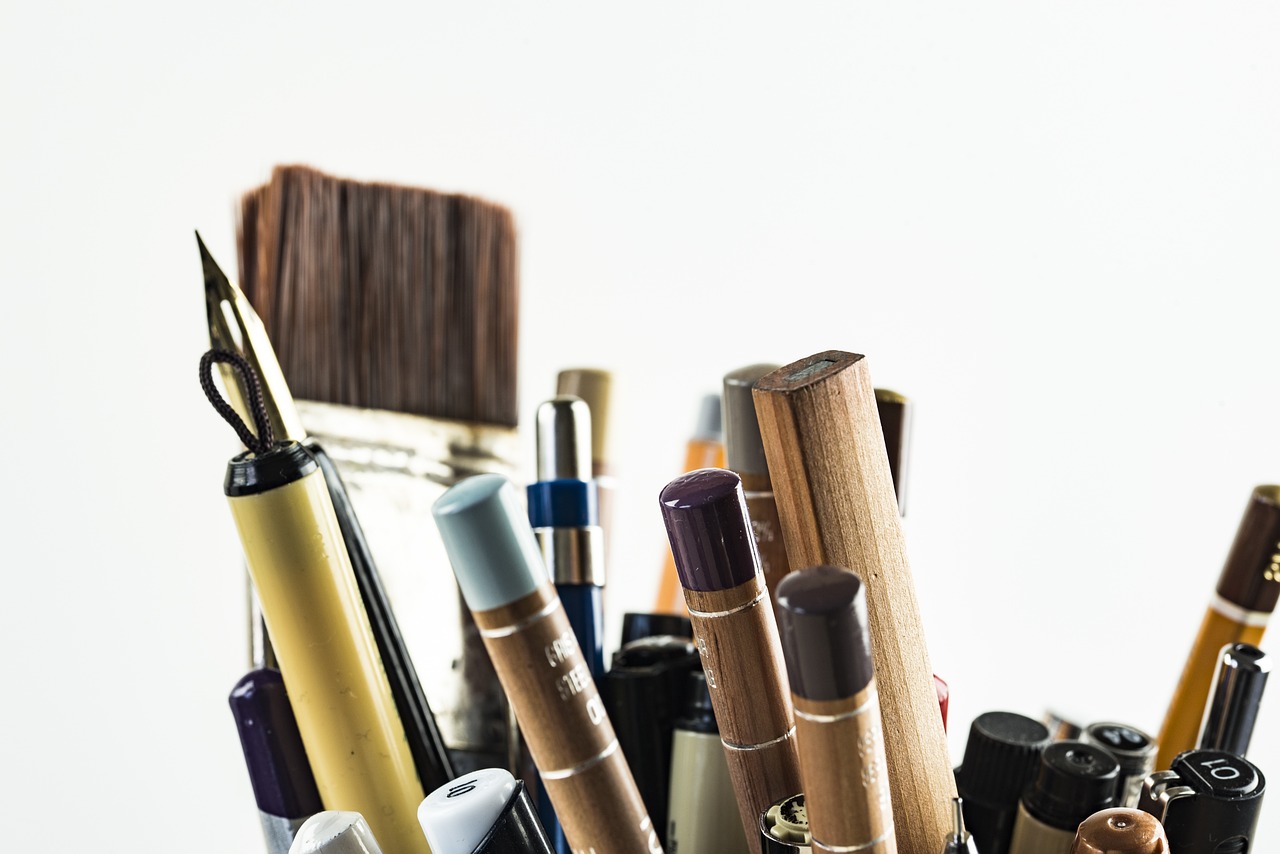This is another creativity exercise. What exactly is the role of the pen in your life? How do you separate function vs fashion, culture vs individual need? A pen is one of the most basic devices of a knowledge worker. That’s why I find it almost mesmerizingly interesting.
Sell me this pen
The article started from a standard marketing question “sell me this pen”. It is a standard question of the marketing interviews. The salesmen need to ask questions to understand the role of the pen in the client’s life, and then pitch a particular pen.
One of the best examples of such a pitch is extremely short. “Do you believe that black lives matter?” “Of course I do!” “Then sign your name here…” “But I do not have a pen…” “Ah! Now you have it!!!” The salesman was an African American and a marketing genius. The interview lasted less than a minute and the guy was hired immediately.
In this example, the salesman does not explain the benefits of a certain mechanism, ink, or function. He is selling a belief system: your signature is the ultimate manifestation of your values.
A disposable pen is good enough
All of us are knowledge workers, and when the keyboard is not available we use a pen. Handwriting is still faster than typing on a mobile device, and more reliable than a dictaphone. A qualified stenographer writes as fast as 225 words per minute, for example when dealing with court testimonies. Few typists can go above 100 words per minute.
Stenographers use “steno pencils”: very reliable lightweight mechanical pencils that never break. An example of such a pencil is the cello gripper. If a pen is required, a lightweight pen with gel ink is used, like Pilot hi-tech v5 point. These are very cheap writing devices. Almost primitive. Plasticky, unbreakable and effective. They put all of your marks on the page with high accuracy.
A pen is basically a tube that holds the refill. The refill is a smaller tube that holds ink or graphite to leave permanent marks. That is all that the pen functionally is. And it is perfect this way,
The pen of an engineer
We are knowledge workers and we use our pen not simply to leave marks on the page, but to preserve knowledge. An engineer will usually have a very reliable ball-point pen, like Parker jotter. Why that pen? Because the engineer does not want to mess up with caps. He wants to be able to write as soon as he has a piece of information to preserve. A fountain pen, gel pen or a lead pencil will need a cap. Otherwise, they may leave a permanent mark inside the pocket. But the ball pen ink will never dry, and the refill is exposed with a press of a button.
There are other pens and pencils, that are targetting architects and designers. Those pens are very accurate, precisely manufactured with minimal tolerances. Not many of these pens are sold, as the goal of an engineer, or any knowledge worker is very simple: record a piece of information as soon as you have it. Faster than it takes to unlock the mobile device screen…
EDC pen
Every day carry pen is a pen of a protector: a soldier, a policeman, a rescuer, or an adventurer. This pen can potentially get fancy. Unlike the cheaper disposable pens mass-produced by injection molding or plastics, EDC pens are tooled one by one on a lathe machine from high-quality metals up to titanium alloys. A good EDC pen will stop a bullet. Not because it has to, but because a pen like this fills the owner with confidence.
An example of such a pen is a bullet pen by Fisher, with a pressurized ink viscous enough to write in space. It can write everywhere, in any temperature and humidity its owner fancies.
More a weapon than a writing utensil, an EDC pen should match the style of a tactical knife and a gun. Black, chrome, and titanium are the most desired colors for tactical use. Copper is used by those adventurers who rarely step out of the office. With time, copper gets unique and beautiful patina patterns highly cherished by pen owners.
Fashion statement
A beautiful pen can be a bold fashion statement. It does not have to be expensive. It can be relatively cheap, yet shiny and highly stylized, possibly with a stylus for a mobile device.
Some of the cheap Jinhao fountain pens are remarkably stylish. They offer a reasonably reliable writing experience at utmost style, and they are very affordable.
Some of the fashionable pens are pocket-sized pens. They are often thick and short, and to write with it you need to post the cap on the cap insert. When not posted, such a pen will be simply too short to write with. Kaweco sport is just such a pen.
Executive pens
Very few people will spend above fifty dollars on a pen unless this pen is a present. Very few people will get a pen as a present unless they are executives. The executives need a pen to be respectable, reliable, and with unique ink.
Executives, doctors, and lawyers sign important documents all day long. They need people to understand that their signature means something. The device which allows them to put remarks and signature on the papers they work with is an extension of their authority. So it should command respect. An additional bonus: custom ink in a fountain pen is very recognizable. You get your unique voice which commands respect. And you can do that with an entry-level Cross fountain pen.
If you want a golden nib for your pen, the pen will cost you above one hundred and fifty dollars. Only you will know that you use a fancy golden nib, as it will usually be safely protected by the cap. Very few people will appreciate the nuances of quality golden #6 nib vs its steel equivalent. And such a pen will still be too cheap for a status symbol. But it will be a marvelous pen, like Lamy 2000.
Illustrator pens
A very different breed of people who buy fifty or one hundred and fifty dollars per pen or pencil are illustrators and calligraphers. Those guys need quality equipment, and they know how to use all the advanced features of this equipment.
A creative genius will often experience creative blocks. And a Lamy safari fountain pen with orange ink or a 5.6mm lead koh-i-noor pencil will let the creative juices flow. The pen or the pencil will probably be used only for the initial idea or sketch, maybe series of sketches for a pitch. The real work is usually done with a computer. It is painstakingly mechanical, accurate, and slow. Thus pen and paper are needed to let the imagination fly, before focusing on each detail.
Ladies and artists will often have diaries with long stories written with calligraphic accuracy and offering a healthy mix of text and sketches. Some of such diaries are sold for multiple millions, especially if they belonged to famous authors and artists.
Jewelry pens
Expensive pens are pieces of jewelry, that can be worn both by men and women. They can be treated as such. Often they feature several golden elements. They are built in limited quantities and often treated as “holy grail” pens by connaissuers.
A remarkable example of jewelry pens are Nakaya fountain pens. These pens are manufactured by hand from ebonite covered by urushi (amber-like natural resin). People who build these pens have forty years of experience in a pen-manufacturing Japanese company. Each pen is perfect in its own way. These pens are too perfect for a clip, and the clip is replaced with are roll-stopping figurine. The price of such a pen is above five hundred dollars. Is it worth it? Probably, as unique jewelry. Not as a pen.
True luxury
Some people need a pen, and they want to use it, only they have enough money to buy the best there is. These people will often buy pens and pencils adorned with sterling silver, and replace them when the silver darkens.
An example of such luxury, are the pencils by graf Faber Castell and pens by Caran d’Ache. These are fine writing devices. They write very well, and they make you feel special. To be honest, most of the entry models are almost affordable. After all, most of us can buy a pen or a pencil for three hundred dollars if we REALLY want one. Only rich people use such pens as we use our disposable uniball jetstream pens. And everybody loves to use a truly stylish pen.
Collector pens
Rich people have elaborate collections. Pens are highly collectible. Owning a rare pen is a very special feeling. Collectible pens often cost thousands of dollars. Some of these pens are manufactured by Italian companies: Aurora, Visconti, Montegrappa.
Honestly, I think they are too bulky and finicky to be great pens, and too complex to go with an elegant outfit. They are pretty much as useless as they are expensive. Collecto pens represent a concept, a shining work of art. They are kept under glass in special collections and worshipped either in quiet solitude or with other collectors and connoisseurs of fine arts and style.
Specialty pens
Not all special pens are expensive. There are many strange and wonderful types of pens, especially if you are interested in calligraphy. I cannot promise that you will use them, but you will definitely enjoy owning them:
- Markers and highlighters for annotation.
- Brush pens. Especially good for Asian languages.
- Quills, ruling pens and oblique pens. Calligraphy equipment. For example, to write a kosher Torah book you need a quill.
- Multipurpose pens. For example, pens that switch between dark blue ballpoint ink, gel orange highlighter, and a pencil by a simple twist of the barrel.
- Tooled kickstarter pens. Limited edition, handmade all-metal devices that go with any ballpoint, gel, or rollerball refill you fancy.
- Fidget pens. Cheap magnetic monstrosities with lots of moving parts. More construction toys than pens.
- Presentation pens. A high-tech mix of laser pointers, telescopic pointers, and bluetooth buttons.
- Stylus pens. To be used with tablets.
- 3D pens. Strange monstrosities that allow 3D sculpturing with plastic. If you have endless patience.
A pen as an object demonstrates the infinite creativity and diversity of our society. Think about it…

